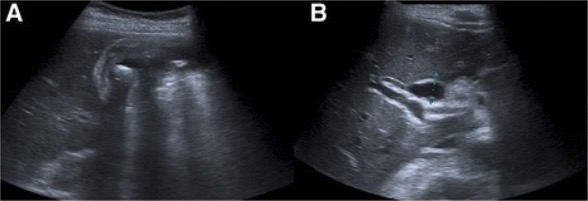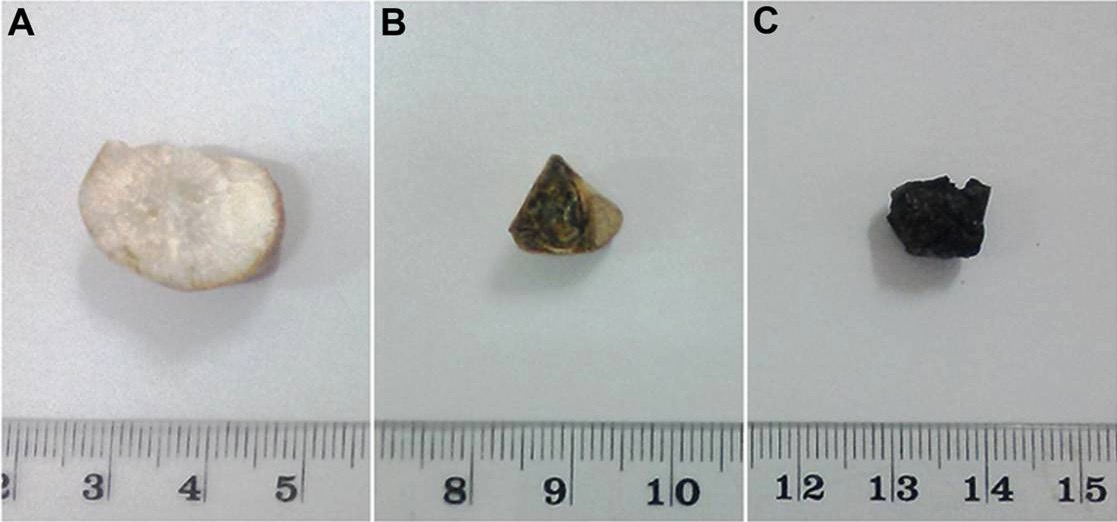Playlist
Show Playlist
Hide Playlist
Biliary Disease: Diagnosis
-
Emergency Medicine Bord Biliary Disease.pdf
-
Download Lecture Overview
00:01 What else do we use to diagnose cholecystitis or gallbladder disease? Ultrasound here is by far the way the best test to diagnose biliary disease. 00:11 It’s generally quick and easy to get. 00:14 And it does not expose the patient to any kind or radiation or ionizing radiation. 00:20 So what ultrasound can show, so it can show if there's gallstone present, it can show if there’s thickening of gallbladder wall. 00:26 One of the key things you wanna look forward is dilatation of the common bile duct or dilatation of the intrahepatic ducts. 00:34 The ducts that run through the liver. 00:35 And you can also look and see if there is pericholecystic fluid. 00:39 Which basically means, is there fluid around the gallbladder. 00:41 So whenever you have fluid and thickening of the wall that indicate that’s there is that inflammation there. 00:46 This is a classic ultrasound for cholecystitis. 00:53 We were seeing here, is you’re seeing that there are stones in the gallbladder. 00:56 You’re seeing that the gallbladder wall appears thick. 00:59 There’s potentially a little bit of fluid. 01:01 So the stones are those bright white structures there. 01:04 They cause shadowing behind the stones, and that’s a very classic thing that happens. 01:08 When I was a resident and learning ultrasound, my ultrasound teacher would say, the gallbladder wall should look like a pencil line. 01:15 And if the wall of the gallbladder looks like a magic marker line that it’s thicker, then that something that makes you think about cholecystitis. 01:23 A CT scan any good for biliary disease. 01:29 This is not a primary test necessarily when you’re looking for the gallbladder. 01:33 Ultrasound should be the first thing that you reach for. 01:35 The first thing that you order when you’re thinking about biliary disease cholecystitis gallstone. 01:40 But sometimes CT scan is a little bit more available at certain institutions. 01:46 So sometimes this is the test that you’re gonna be, that you’re gonna get when you’re thinking about gallbladder disease. 01:53 You know it actually has a pretty good sensitivity and specificity for cholecystitis. 01:58 So 92% sensitivity, 99% specificity. 02:02 So it’s not that it’s a bad test. 02:04 It’s just doesn't necessarily give you all of your information that you’re looking for. 02:09 And generally if the patient is going for surgery or they’re considering taking the patient for surgery. 02:15 The surgery team will want to see that ultrasound. 02:17 CT scan can be more helpful in situations of emphysematous cholecystitis which is what's pictured here. 02:25 You could see that there's air in the bowel wall by that thin green arrow. 02:30 Shows that there's air within... 02:31 not the bowel wall but in the gallbladder wall. 02:34 And then hemorrhagic cholecystitis which is basically cholecystitis that is related to hemorrhage or bleeding. 02:42 Those conditions are both quite serious and CT scan can help better see those. 02:46 Generally air is the enemy what we say of ultrasound. 02:51 So air plus ultrasound equals not good images. 02:54 So that’s why emphysematous cholecystitis can be better more easily seen sometimes on that CT scan. 03:00 Now acalculous cholecystitis is another entity. 03:05 What that basically mean is acalculous means that there’s no gallstones. 03:10 Calculous means stone. 03:11 "A" means none there, in the world of medicine. 03:14 So acalculous cholecystitis, cholecystitis without any gallstones present. 03:19 This is most common in elderly patients, or patients with advanced AIDS. 03:24 So patients who are very severely immunosuppressed. 03:26 Also diagnose with ultrasound, but the findings here are a little bit less sensitive. 03:31 It’s important again to really make sure you’re thinking about this and considering it. 03:36 Because it actually has a pretty high mortality, and can have a very acute course of illness. 03:41 So combine with the fact that it’s challenging to diagnose. 03:44 Have a high suspicion for this condition or definitely be thinking about it when you’re taking care of someone who's a little bit older with pain at the right area or a patient who’s very immunosuppressed. 03:55 The other imaging study that sometime is obtained although not so frequently from the Emergency Department, but it’s good for you to be aware of it, is something called nuclear medicine imaging. 04:06 So this is a gallbladder scan where a patient is given labeled Iminodiacedic acid (IDA). 04:13 And when they’re given this, it’s taken up by the hepatocytes. 04:16 So this is something that’s, this is a substance that’s labeled that's it’s known to be taken up by the cells in the liver. 04:23 Within one hour what you should be able to see is you should be able to see the gallbladder lighting up. 04:28 This is a test that assesses gallbladder functions. 04:31 So is your gallbladder doing its job? Or is your gallbladder not able to do its job? So it’s assessing the function of the gallbladder. 04:38 You know, if they are able to see the gallbladder, it has a high negative predictive value for cholecystitis. 04:44 If you’re not able to see the gallbladder that something that may point the surgeon and the surgery team in direction for a possible operation. 04:52 What other testing do we wanna get? So we mentioned that we’re gonna get our ultrasound and possibly a CT scan to get additional imaging information. 05:01 We also wanna do some blood test. 05:03 So we wanna get some liver function test. 05:05 We wanna see what those lab values are. 05:07 We wanna get bilirubin levels, very important for diagnosing cholangitis. 05:12 So in the situation of cholangitis you would have elevated bilirubin level or jaundice. 05:19 Coagulation studies, when you’re having problems with the liver, the liver makes a lot of coagulation factor. 05:25 So if you’re having problems with the liver, getting coagulation studies can be very helpful. 05:29 You wanna know if they are abnormal or altered in any way. 05:33 Especially if your patient might need to go for an operation. 05:36 And then thinking about a CBC, a complete blood count and specifically a white blood cell count. 05:41 You know the white blood cell count is none specific, it doesn’t say you know, it’s definitely cholecystitis or it’s not cholecystitis. 05:49 But if it’s elevated, it can potentially further support you saying that there’s an infection within the patient’s body.
About the Lecture
The lecture Biliary Disease: Diagnosis by Sharon Bord, MD is from the course Abdominal and Genitourinary Emergencies. It contains the following chapters:
- Biliary Disease Diagnosis
- Diagnosis: CT Scan
- Diagnosis: Nuclear Medicine Testing
- Diagnosis: Lab Tests
Included Quiz Questions
What is the best imaging modality to use in the primary evaluation of biliary disease?
- Ultrasound
- Radiograph
- CT scan
- MRI
- Endoscopy
In evaluating patients with biliary disease using an ultrasound, what classic finding suggests cholelithiasis?
- Echogenic focus with acoustic shadowing
- Gallbladder wall thickening
- Pericholecystic fluid
- Common bile duct dilatation
- Intrahepatic duct dilatation
A nuclear scan may be used in the evaluation of the gallbladder for what purpose?
- To check the function of the gallbladder
- To detect the presence of very tiny stones
- To accurately measure the size of the gallbladder
- To detect emphysematous cholecystitis
- To evaluate the presence of hemorrhagic cholecystitis
Customer reviews
5,0 of 5 stars
| 5 Stars |
|
1 |
| 4 Stars |
|
0 |
| 3 Stars |
|
0 |
| 2 Stars |
|
0 |
| 1 Star |
|
0 |
excellent lecture, the detail is very appropriate and I feel more confident in this area now, Thank you!






